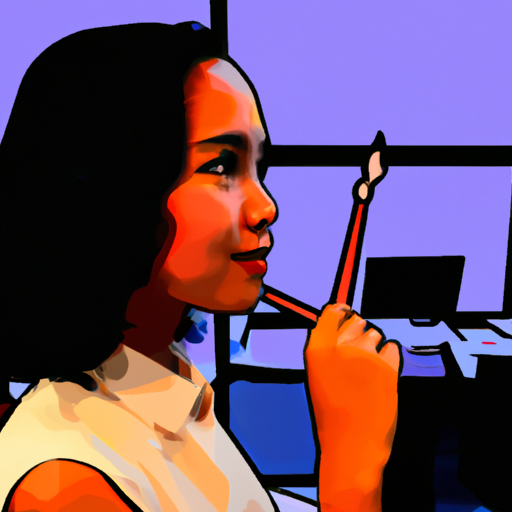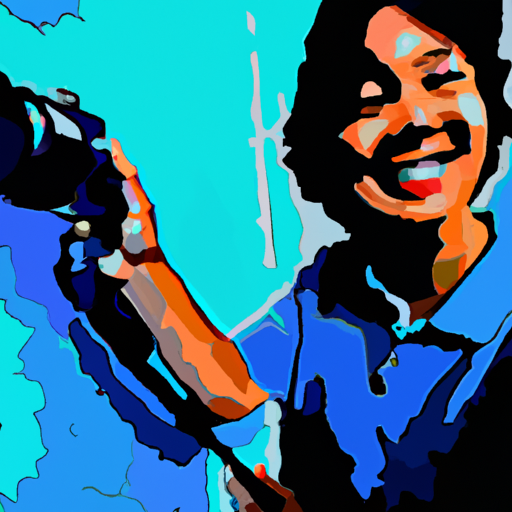
-
Table of Contents
- Digital Painting Techniques for Illustrators
- The Benefits of Digital Painting
- Essential Tools for Digital Painting
- Techniques for Digital Painting
- 1. Sketching and Blocking In
- 2. Layering and Building Up Details
- 3. Blending and Smudging
- 4. Texturing and Brushwork
- Case Study: Digital Painting in the Entertainment Industry
Digital Painting Techniques for Illustrators

Illustration has come a long way since the days of traditional painting techniques. With the advent of digital tools and software, artists now have a whole new world of possibilities at their fingertips. Digital painting has become increasingly popular among illustrators, allowing them to create stunning and realistic artwork with ease. In this article, we will explore some of the most effective digital painting techniques that can help illustrators take their work to the next level.
The Benefits of Digital Painting
Before diving into the techniques, let’s first understand why digital painting has become such a game-changer for illustrators. Here are some of the key benefits:
- Undo and Redo: One of the biggest advantages of digital painting is the ability to undo and redo actions. This feature allows artists to experiment freely without the fear of making irreversible mistakes.
- Layering: Digital painting software offers the ability to work with layers, which allows artists to separate different elements of their artwork. This makes it easier to make changes to specific parts of the illustration without affecting the rest.
- Efficiency: Digital painting eliminates the need for physical materials and cleanup, saving time and money. Artists can also work faster by utilizing shortcuts and automation tools.
- Flexibility: Digital artwork can be easily resized, edited, and shared across various platforms without losing quality. This makes it ideal for illustrators working in different mediums, such as print and web.
Essential Tools for Digital Painting
Before exploring the techniques, it’s important to have the right tools for digital painting. Here are some essential tools that every illustrator should consider:
- Graphics Tablet: A graphics tablet is a must-have for digital painting. It allows artists to draw directly on the screen, providing a more natural and intuitive experience. Popular options include Wacom Intuos and Huion Kamvas.
- Digital Painting Software: There are several digital painting software options available, each with its own unique features and interface. Some popular choices among illustrators include Adobe Photoshop, Corel Painter, and Procreate (for iPad users).
- Brushes and Textures: Digital painting software often comes with a variety of brushes and textures, but artists can also create their own or download additional ones from online resources. Experimenting with different brushes and textures can add depth and realism to the artwork.
- Color Picker: A color picker tool allows artists to select colors from the digital canvas or any other source. This tool is essential for achieving accurate color representation in the artwork.
Techniques for Digital Painting
Now that we have the necessary tools, let’s explore some techniques that can help illustrators enhance their digital paintings:
1. Sketching and Blocking In
Just like traditional painting, digital painting starts with a sketch. Artists can use the sketching tools in their digital painting software to create a rough outline of their artwork. This initial sketch serves as a guide for the rest of the painting process.
Once the sketch is complete, it’s time to block in the basic shapes and colors. This involves filling the canvas with broad strokes to establish the overall composition and color scheme. Artists can use large brushes and low opacity to build up the basic structure of the artwork.
2. Layering and Building Up Details
Layering is a powerful technique in digital painting that allows artists to work on different elements of the artwork separately. By creating multiple layers, artists can add details without affecting the rest of the painting.
For example, an illustrator working on a portrait can create separate layers for the skin, hair, eyes, and background. This way, they can make adjustments and add details to each element without worrying about ruining the rest of the artwork.
Building up details involves gradually adding more refined strokes and textures to the painting. Artists can use smaller brushes and higher opacity to add intricate details and textures to their artwork. This step requires patience and attention to detail.
3. Blending and Smudging
Blending and smudging are techniques used to create smooth transitions and gradients in digital paintings. These techniques help to achieve a more realistic and polished look.
Blending involves using a soft brush to merge colors together. Artists can select colors from the canvas and gently brush over the edges to create smooth transitions. This technique is particularly useful for creating realistic skin tones and soft shadows.
Smudging, on the other hand, involves using a smudge tool to drag and blend colors. This technique is often used for creating soft and fluffy textures, such as fur or clouds. Artists can experiment with different brush sizes and pressure to achieve the desired effect.
4. Texturing and Brushwork
Texturing and brushwork are techniques that add depth and visual interest to digital paintings. These techniques can be used to create various effects, such as rough surfaces, fabric textures, or brush strokes.
Artists can experiment with different brushes and textures to achieve the desired effect. For example, a rough texture brush can be used to create the appearance of a stone wall, while a soft brush with low opacity can be used to create a smooth fabric texture.
Brushwork is also an important aspect of digital painting. Artists can vary the size, opacity, and pressure of their brushes to create different brush strokes. This can add a sense of movement and energy to the artwork.
Case Study: Digital Painting in the Entertainment Industry
Digital painting has become an integral part of the entertainment industry, particularly in the creation of concept art for movies, video games, and animations. Let’s take a look at a case study to understand how digital painting techniques are used in this industry.
In the production of the movie “Avatar,” digital painting played a crucial role in the creation of the alien world of Pandora. The concept artists used digital painting techniques to bring director James Cameron’s vision to life.
They started by sketching rough ideas for the various creatures, landscapes, and environments in the movie. Once the sketches were approved, they moved on to blocking in the basic shapes and colors using digital painting software.
Layering was used extensively to add details and depth to the artwork. The artists created separate layers for the different elements of the scenes, such as the plants, animals, and characters. This allowed them to make changes and adjustments easily without affecting the rest of the painting.
Blending and smudging techniques were used to create realistic textures and gradients. The artists paid close attention to lighting and shadows to achieve a sense of realism in the alien world.
The final result was a
